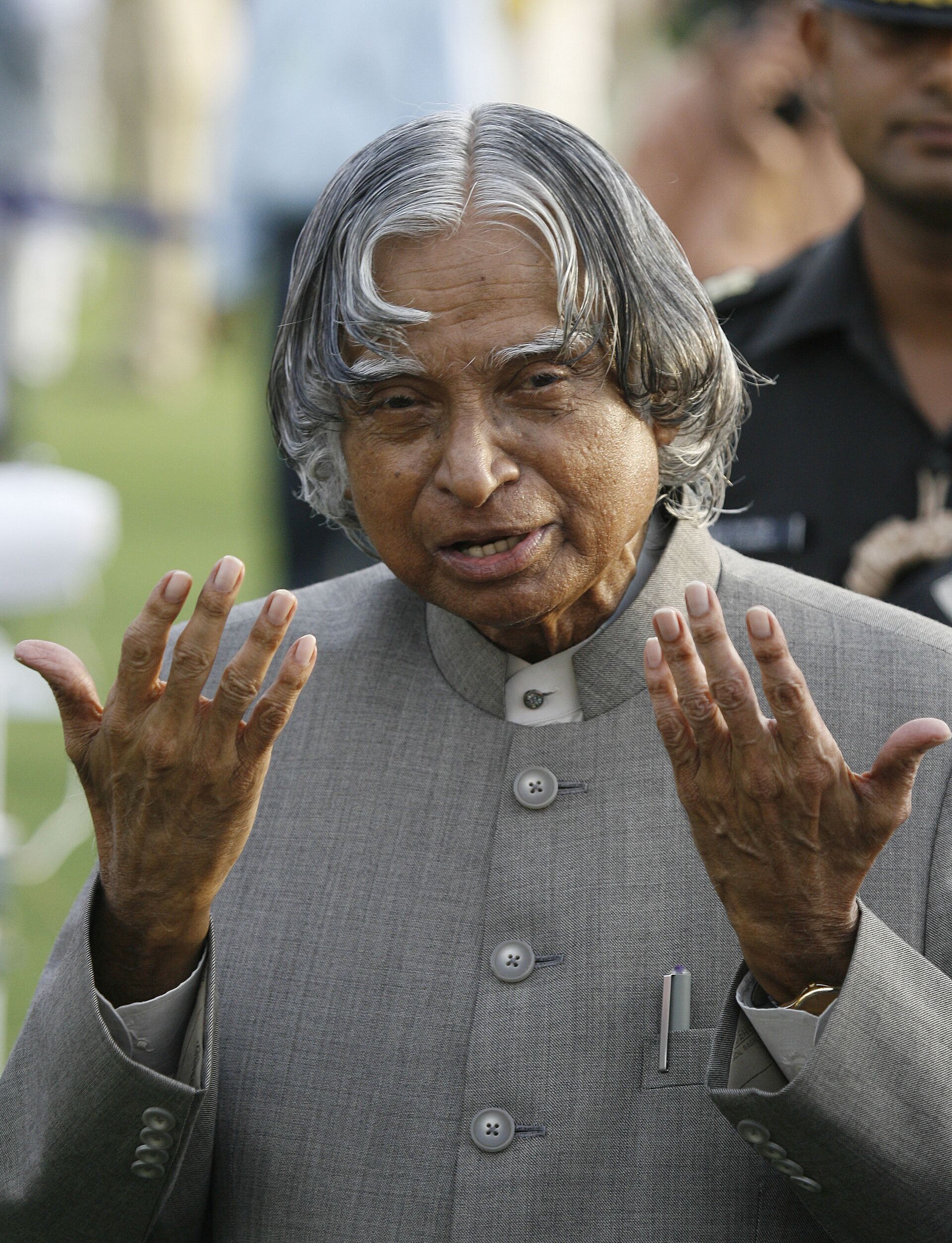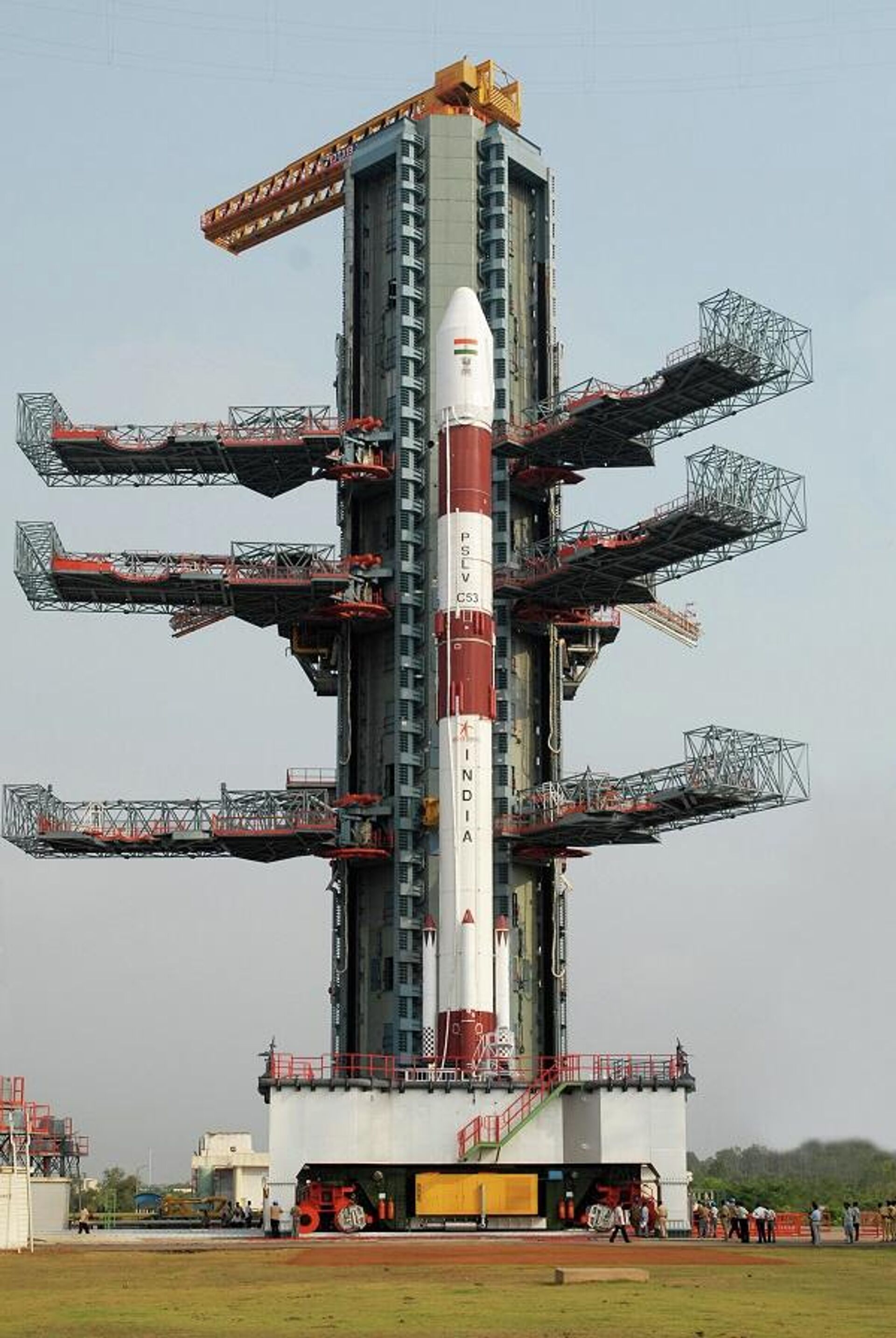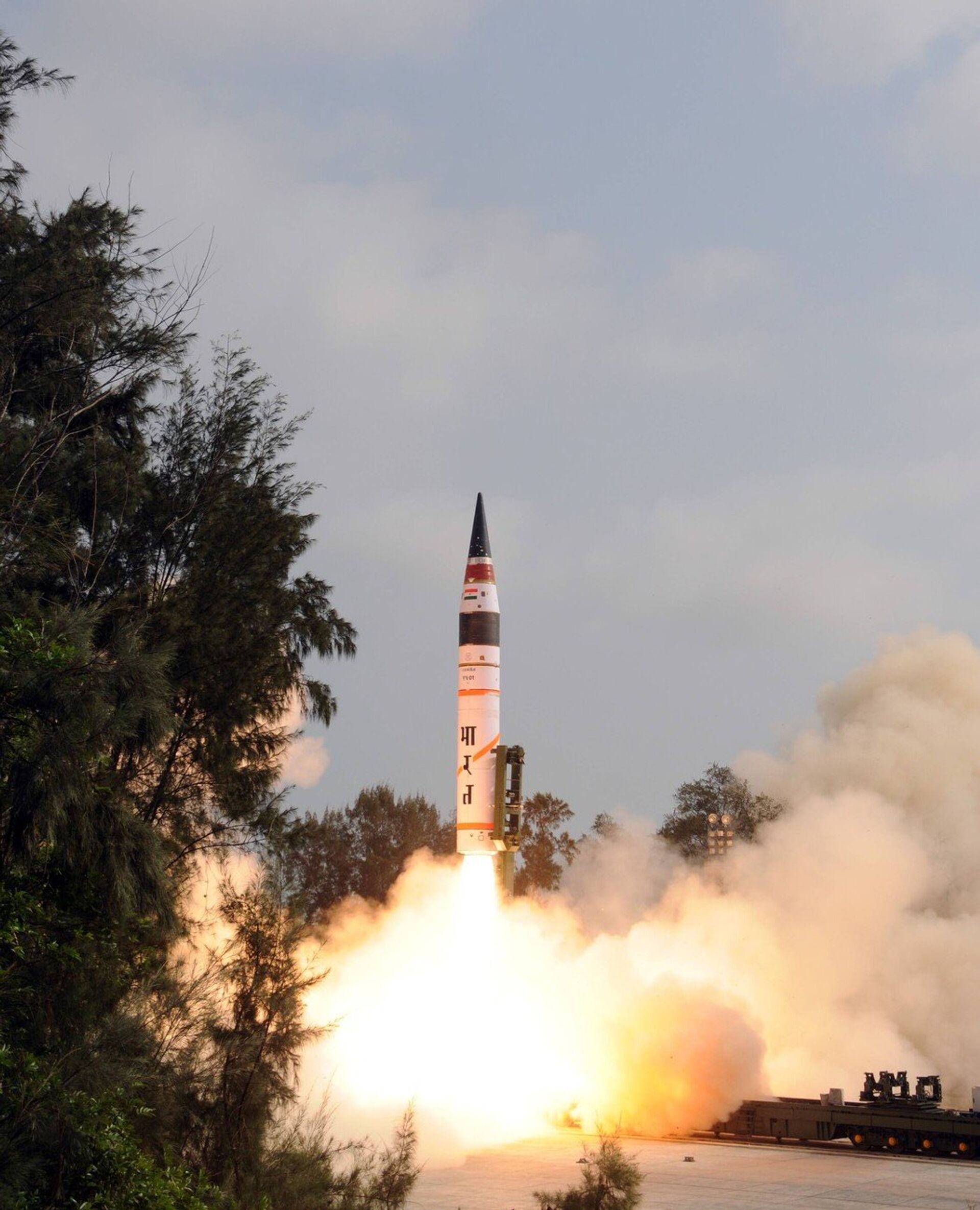https://sputniknews.in/20230728/who-is-the-missile-man-of-india-3237965.html
Who is the Missile Man of India?
Who is the Missile Man of India?
Sputnik India
India paid rich tributes to APJ Abdul Kalam on Thursday on the occasion of his eighth death anniversary. He served as the 11th President of the country from 2002 to 2007
2023-07-28T16:07+0530
2023-07-28T16:07+0530
2023-07-28T16:07+0530
india
delhi
new delhi
tamil nadu
indian army
drdo
indian space research organisation (isro)
agni-1 ballistic missile
space industry
space rocket
https://cdn1.img.sputniknews.in/img/07e7/07/1b/3231302_0:106:1480:939_1920x0_80_0_0_6b0b0ddad0de7fdbc8ade6ca58b71ece.jpg
India paid rich tributes to Dr. APJ Abdul Kalam, known as 'Missile Man of India', on Thursday on the occasion of his eighth death anniversary. Kalam served as the 11th President of the country from 2002 to 2007. He was elected to the post with the support of both the ruling Bharatiya Janata Party (BJP) and the then-opposition Congress.After his tenure as the President was over, Kalam returned to civilian life, which involved education, writing and public service. He was the visiting professor with country’s premier management schools like Indian Institute of Management Shillong, and the Indian Institute of Management Ahmedabad and Indian Institute of Management Indore.Apart from this, the former president provided his services to various other academic and research institutions across the country, which includes the nation's premier science school, the Indian Institute of Science in Bengaluru.Who is APJ Abdul Kalam Azad?Kalam was born on 15 October 1931 to Jainulabdeen Marakayar, a boat owner and head of a local mosque, and Ashiamma, a housewife.He spent his teenage years studying at the Schwartz Higher Secondary School in Ramanathapuram, Tamil Nadu, yet he graduated with a degree in Physics from St. Joseph College in Tiruchirappalli in 1954.After completing his graduation, Kalam in 1955 went to the Madras Institute of Technology to pursue aerospace engineering.Kalam dreamt of becoming a fighter pilot, but ended up taking the ninth spot in the qualifiers, yet only eight positions were available in the Indian Air Force (IAF).Later, the eminent scientist joined the Indian National Committee for Space Research (INCOSPAR), established in 1962 by the country’s first Prime Minister Jawaharlal Nehru and dissolved in 1969. It was superseded by Indian Space Research Organisation (ISRO) and Kalam was transferred into it.Why is Abdul Kalam Called Missile Man of India?Kalam has several achievements under his belt while employed as a scientist with the DRDO and ISRO. The first indigenous satellite launch vehicle, the Satellite Launch Vehicle (SLV-III), was developed under Kalam's guidance since he was the project director. Later on, he also created the Polar Satellite Launch Vehicle (PSLV). Both, the SLV-III and PSLV, were developed between 1970-90.According to reports, these were disapproved by the Cabinet, but the then Prime Minister Indira Gandhi allotted secret funds to the projects.Owing to his research expertise, the then Defence Minister suggested that his scientific advisor Dr. V.S. Arunachalam and Kalam develop a quiver of missiles.The mission was named the Integrated Guided Missile Development Programme (IGMDP) and Kalam was appointed its chief executive. Under the mission, the eminent scientist developed several missiles like the Agni intermediate-range ballistic missile and the Prithvi tactical surface-to-surface missile.From 1992-99, Kalam served as the Chief Scientific Advisor to the Prime Minister and Secretary of DRDO. He played a crucial role in the Pokhran-II nuclear test, which established India’s position amongst the nuclear-armed countries.Apart from developing missiles, Kalam is also credited with developing a low-cost coronary stent in 1998 and a rugged tablet computer for the healthcare system in rural areas in 2012. Cardiologist Soma Raju assisted him on both of those things.Apart from receiving these awards, Kalam also received 48 doctorates from 48 universities, including the University of Edinburgh and the Carnegie Mellon University.Controversies Related to APJ Abdul KalamDespite being known as the “People’s President”, a few controversies marred his tenure. The first one being the indecision on mercy pleas. According to reports, the 11th President of the country took a decision on only two mercy pleas, while the other 26 were pending before him. One of the pleas amongst those undecided was of the 2001 Parliament attack involving the convict Afzal Guru.However, Kalam during one of his interview with the media said that he did not even come across Guru's plea.There are some reports which say that the “people’s president” was opposed to the idea of the death penalty and he had even expressed this same stance in his book titled “Turning Points: A Journey Through Challenges”.The third time Kalam ended up in hot water was when he supported the Kudankulam nuclear power plant in 2011. People living around the under-construction nuclear power plant in Tiruneveli district of Tamil Nadu held protests against it, fearing a nuclear disaster repeat like the one that had just taken place in Japan.However, Kalam who had visited the site to inspect the safety precautions taken at the plant supported the construction, which was criticised by the locals as well as social activists and scientists.APJ Abdul Kalam Death AnniversaryOn 27 July 2015, Kalam went into cardiac arrest while giving a lecture at the Indian Institute of Management Shillong. He was promptly rushed to a nearby hospital, but despite efforts to save him by putting him in ICU, he was pronounced dead.His body was flown to Delhi on 28 July and was received by the then President, Vice President, Prime Minister, State Chief of Delhi and chiefs of the Indian Armed Forces at Palam Air Base.His body was kept at his residence in the national capital for a day and then flown to Madurai from Palam Air Base for the public to pay their final respects.He was laid to rest with full state honors on 30 July.
india
delhi
new delhi
tamil nadu
Sputnik India
feedback.hindi@sputniknews.com
+74956456601
MIA „Rossiya Segodnya“
2023
Rahul Trivedi
https://cdn1.img.sputniknews.in/img/07e6/0c/13/136500_0:0:628:627_100x100_80_0_0_72097ff894c7446b70d2efafcb719720.jpg
Rahul Trivedi
https://cdn1.img.sputniknews.in/img/07e6/0c/13/136500_0:0:628:627_100x100_80_0_0_72097ff894c7446b70d2efafcb719720.jpg
News
en_IN
Sputnik India
feedback.hindi@sputniknews.com
+74956456601
MIA „Rossiya Segodnya“
Sputnik India
feedback.hindi@sputniknews.com
+74956456601
MIA „Rossiya Segodnya“
Rahul Trivedi
https://cdn1.img.sputniknews.in/img/07e6/0c/13/136500_0:0:628:627_100x100_80_0_0_72097ff894c7446b70d2efafcb719720.jpg
missile man of india, missile man, who is the missile man of india, who is known as the missile man of india, the missile man of india, missile man of india in hindi, who is known as missile man of indiawho is missile man of india, world first missile manfirst missile man of india, who is the missile man, missile man kise kaha jata hai, missile man of india essay, indian missile man, missile man meaning in tamil, apj abdul kalam missile man, first missile man of world, who is missile man, essay on missile man of india, who is the first missile man of india, missile man of world, missile man of india drawing, who was the missile man of india, missile man ke naam se kise jana jata hai, apj abdul kalam missile man of india, who is called missile man of india, missile man of india apj abdul kalam, missile man meaning, who is called the missile man of india, missile man apj abdul kalam, why apj abdul kalam called missile man, who is known as missile man, missile man of india in tamil, world's first missile man, the missile man of india question answer, which country did tony stark present his jericho missile in, on iron man 1, first missile man, missile man kise kahate hain, first missile man of india tipu sultan
missile man of india, missile man, who is the missile man of india, who is known as the missile man of india, the missile man of india, missile man of india in hindi, who is known as missile man of indiawho is missile man of india, world first missile manfirst missile man of india, who is the missile man, missile man kise kaha jata hai, missile man of india essay, indian missile man, missile man meaning in tamil, apj abdul kalam missile man, first missile man of world, who is missile man, essay on missile man of india, who is the first missile man of india, missile man of world, missile man of india drawing, who was the missile man of india, missile man ke naam se kise jana jata hai, apj abdul kalam missile man of india, who is called missile man of india, missile man of india apj abdul kalam, missile man meaning, who is called the missile man of india, missile man apj abdul kalam, why apj abdul kalam called missile man, who is known as missile man, missile man of india in tamil, world's first missile man, the missile man of india question answer, which country did tony stark present his jericho missile in, on iron man 1, first missile man, missile man kise kahate hain, first missile man of india tipu sultan
Who is the Missile Man of India?
Avul Pakir Jainulabdeen (APJ) Abdul Kalam played a significant role in developing missile and sattelite programms of India. He is known as "Missile Man of India".
India paid rich tributes to Dr. APJ Abdul Kalam, known as 'Missile Man of India', on Thursday on the occasion of his eighth death anniversary.
Kalam served as the 11th President of the country from 2002 to 2007. He was elected to the post with the support of both the ruling Bharatiya Janata Party (BJP) and the then-opposition Congress.
After his tenure as the President was over, Kalam returned to civilian life, which involved education, writing and public service. He was the visiting professor with country’s premier management schools like Indian Institute of Management Shillong, and the Indian Institute of Management Ahmedabad and Indian Institute of Management Indore.
Apart from this, the former president provided his services to various other academic and research institutions across the country, which includes the nation's premier science school, the Indian Institute of Science in Bengaluru.
Kalam was known as the “People’s President” for his humility and down-to-earth nature, while widely referred to as the “Children’s President” for his love of kids and the youth.
Who is APJ Abdul Kalam Azad?
Kalam was born on 15 October 1931 to Jainulabdeen Marakayar, a boat owner and head of a local mosque, and Ashiamma, a housewife.
He spent his teenage years studying at the Schwartz Higher Secondary School in Ramanathapuram, Tamil Nadu, yet he graduated with a degree in Physics from St. Joseph College in Tiruchirappalli in 1954.
After completing his graduation, Kalam in 1955 went to the Madras Institute of Technology to pursue aerospace engineering.
Kalam dreamt of becoming a
fighter pilot, but ended up taking the ninth spot in the qualifiers, yet only eight positions were available in the Indian Air Force (IAF).
However, after completing an aerospace engineering degree in 1960, he joined the Aeronautical Development Establishment of the Defence Research and Development Organisation (DRDO). In his early days at DRDO, he designed a small helicopter for the Indian Army, but he was not satisfied with the job.
Later, the eminent scientist joined the Indian National Committee for Space Research (INCOSPAR), established in 1962 by the country’s first Prime Minister Jawaharlal Nehru and dissolved in 1969. It was superseded by Indian Space Research Organisation (ISRO) and Kalam was transferred into it.
Why is Abdul Kalam Called Missile Man of India?
Kalam has several achievements under his belt while employed as a scientist with the DRDO and ISRO. The first indigenous satellite launch vehicle, the
Satellite Launch Vehicle (SLV-III), was developed under Kalam's guidance since he was the project director. Later on, he also created the
Polar Satellite Launch Vehicle (PSLV). Both, the SLV-III and PSLV, were developed between 1970-90.
The ‘missile man’ was also invited to witness India's first nuclear test, despite not being part of its development. However, the major turning point in his career as a scientist surfaced when in the 1970s he directed two projects – Project Devil and Project Valiant.
According to reports, these were disapproved by the Cabinet, but the then Prime Minister
Indira Gandhi allotted secret funds to the projects.
Owing to his research expertise, the then Defence Minister suggested that his scientific advisor Dr. V.S. Arunachalam and Kalam develop a quiver of missiles.
The mission was named the Integrated Guided Missile Development Programme (IGMDP) and Kalam was appointed its chief executive. Under the mission, the eminent scientist developed several missiles like the
Agni intermediate-range ballistic missile and the
Prithvi tactical surface-to-surface missile.
From 1992-99, Kalam served as the Chief Scientific Advisor to the Prime Minister and Secretary of DRDO. He played a crucial role in the
Pokhran-II nuclear test, which established India’s position amongst the nuclear-armed countries.
Apart from developing missiles, Kalam is also credited with developing a low-cost coronary stent in 1998 and a rugged tablet computer for the healthcare system in rural areas in 2012. Cardiologist Soma Raju assisted him on both of those things.
Awards and Accolades
Year | Award |
1981 | Padma Bhushan by Government of India |
1990 | Padma Vibhushan by Government of India |
1997 | Bharat Ratna by Government of India |
1997 | Indira Gandhi Award for National Integration by Government of India |
1998 | Veer Savarkar Award by Government of India |
2000 | SASTRA Ramanujan Prize by Shanmugha Arts, Science, Technology & Research Academy, India |
2013 | Von Braun Award by National Space Society |
Apart from receiving these awards, Kalam also received 48 doctorates from 48 universities, including the University of Edinburgh and the Carnegie Mellon University.
Controversies Related to APJ Abdul Kalam
Despite being known as the “People’s President”, a few controversies marred his tenure. The first one being the indecision on mercy pleas. According to reports, the 11th President of the country took a decision on only two mercy pleas, while the other 26 were pending before him. One of the pleas amongst those undecided was of the 2001 Parliament attack involving the convict Afzal Guru.
However, Kalam during one of his interview with the media said that he did not even come across Guru's plea.
There are some reports which say that the “people’s president” was opposed to the idea of the death penalty and he had even expressed this same stance in his book titled “Turning Points: A Journey Through Challenges”.
The second time Kalam faced criticism was when he imposed the President’s rule in Bihar in 2005 since no political party got a clear majority in the State Assembly polls. As per media reports, Kalam took the decision to impose the President’s rule on the advice of the Congress-led Federal government. However, the matter was taken up to the Supreme Court and the then Chief Justice of India criticised the decision, saying it was taken with “malafide intent”.
The third time Kalam ended up in hot water was when he supported the Kudankulam nuclear power plant in 2011. People living around the under-construction nuclear power plant in Tiruneveli district of Tamil Nadu held protests against it, fearing a nuclear disaster repeat like the one that had just taken place in Japan.
However, Kalam who had visited the site to inspect the safety precautions taken at the plant supported the construction, which was criticised by the locals as well as social activists and scientists.
APJ Abdul Kalam Death Anniversary
On 27 July 2015, Kalam went into cardiac arrest while giving a lecture at the Indian Institute of Management Shillong. He was promptly rushed to a nearby hospital, but despite efforts to save him by putting him in ICU, he was pronounced dead.
His body was flown to Delhi on 28 July and was received by the then President, Vice President, Prime Minister, State Chief of Delhi and chiefs of the Indian Armed Forces at Palam Air Base.
His body was kept at his residence in the national capital for a day and then flown to Madurai from Palam Air Base for the public to pay their final respects.
He was laid to rest with full state honors on 30 July.





